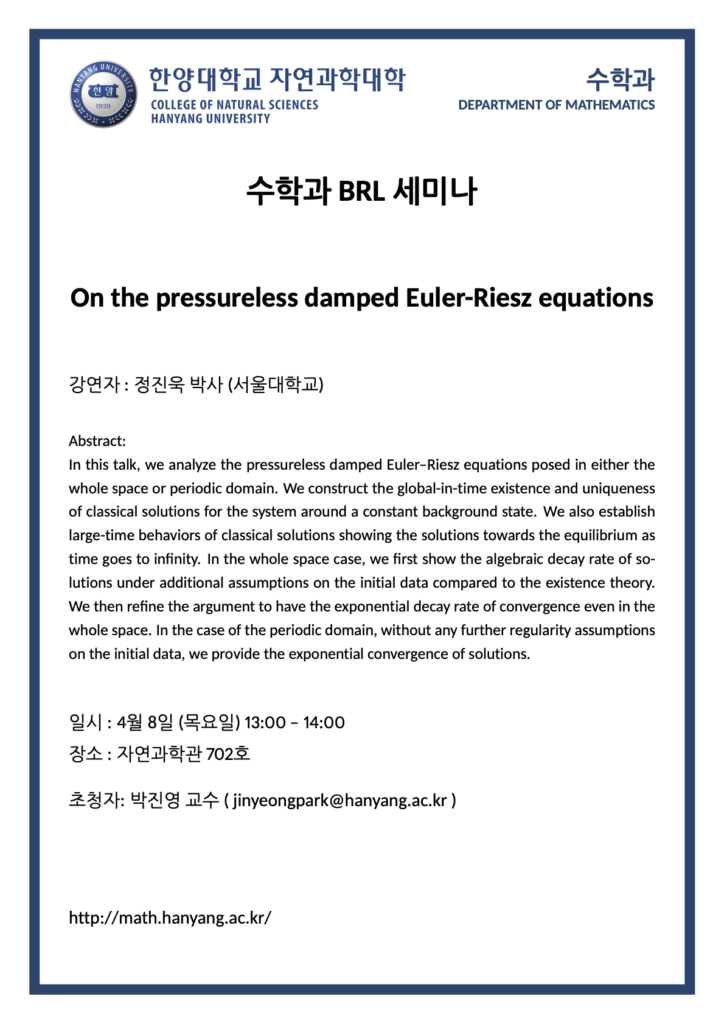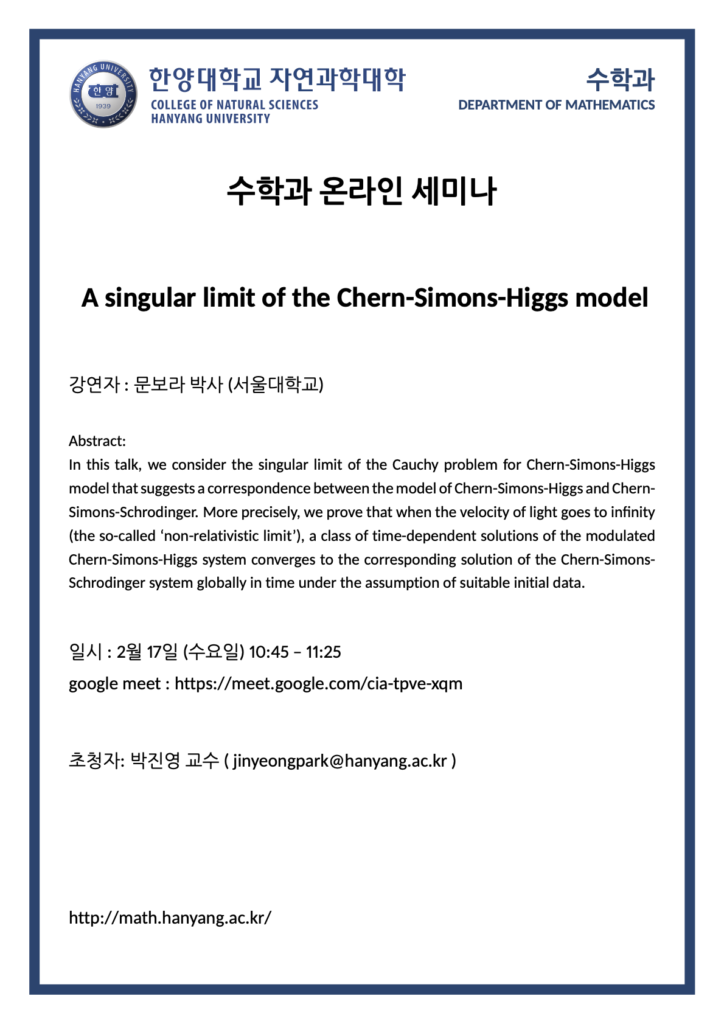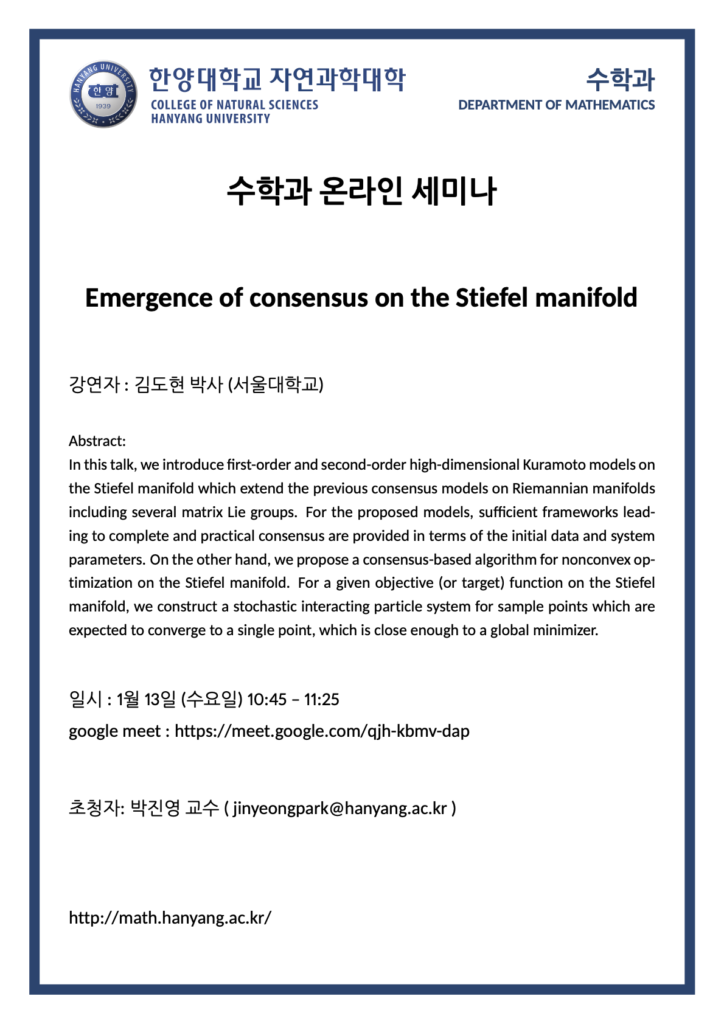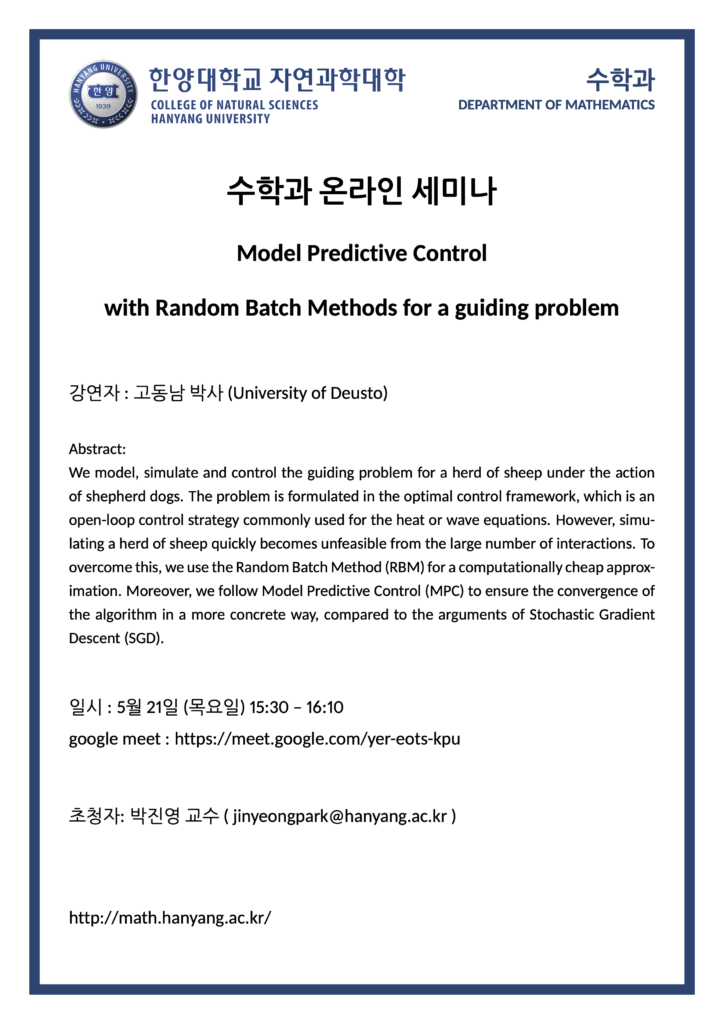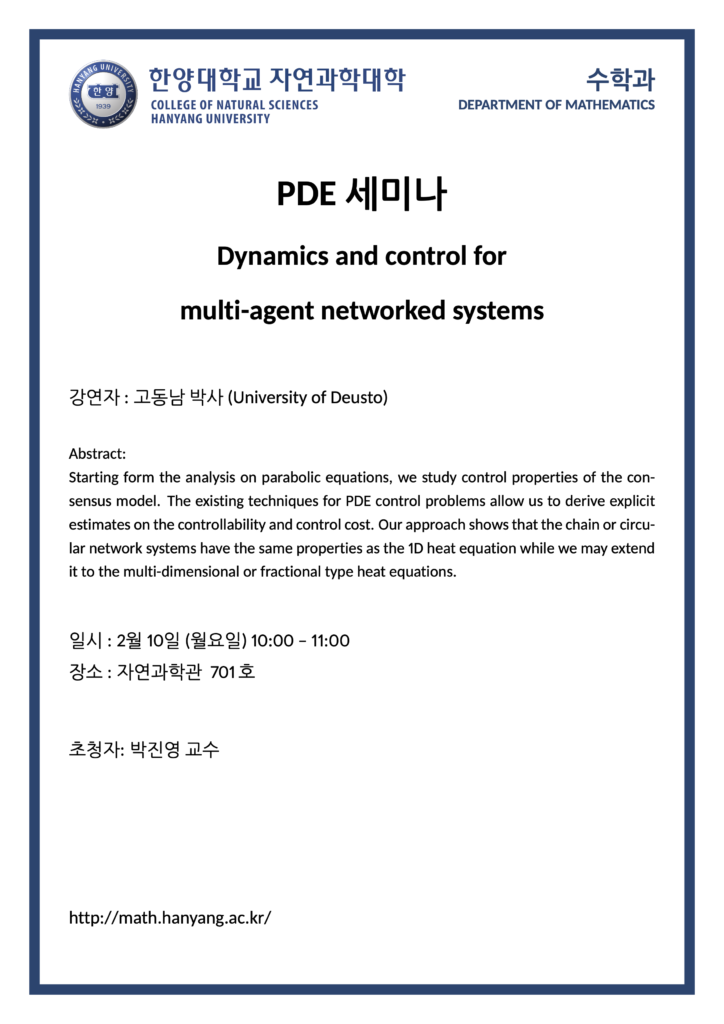We have the following seminar via google meet.
1.
Title: 출근 지하철 혼잡도 분산을 위한 최적 수도권 지역 분할
Time: August 6th (Thursday) 09:30 – 10:10
Speaker: Dr. Wonse Kim (SNU)
Abstract:
출근 지하철 혼잡도 분산을 위한 최적 수도권 지역 분할본 연구는 수도권 전철 네트워크 데이터와 지하철 승객 승, 하차 빅데이터를 분석하여, 출퇴근 지하철 차내 혼잡도를 낮추기 위한 수도권 지역 최적 분할 방법을 제시한다. 구체적으로, (1) Dijkstra Algorithm 에 기반한 Dial Algorithm 을 사용하여 수도권 전철의 출근시간대 차내 혼잡도를 계산하고 (2) 지하철역 위치정보를 활용하여 출근시간 혼잡 구간을 지나는 승객의 지하철 최초 탑승 지역을 파악한다. (1), (2)의 결과를 바탕으로, 수도권 전철 출근시간 혼잡구간의 혼잡도를 최소화 시키는 수도권 지역 최적 분할을 찾기 위한 손실함수 (loss function)을 새롭게 정의하고, 이를 최적화 시킴으로서 최적 수도권 지역분할을 찾는다. 본 연구의 결과는 2차 코로나 대유행을 앞둔 현 시점에서, 정책 당국자들로 하여금 2부제 재택근무와 같은 사회적 거리두기 방법의 효과를 극대화 시킬 수 있는 구체적인 가이드 라인을 제시할 것으로 기대된다.
2.
Title: Thermodynamic Cucker-Smale ensemble on complete Riemannian manifolds
Time: August 6th (Thursday) 10:15 – 10:55
Speaker: Dr. Woojoo Shim (SNU)
Abstract:
We study emergent collective behaviors of a thermodynamic Cucker-Smale(TCS) ensemble on complete smooth Riemannian manifolds. For this, we extend the TCS model on the Euclidean space to a complete smooth Riemannian manifold by adopting the work for a CS ensemble, and provide a sufficient framework for velocity alignment and thermal equilibrium formulated in terms of a priori assumptions on network topology and the uniform continuity of relative velocities. As a concrete example, we also study emergent dynamics of the TCS model on the unit d-sphere and hyperbolic d-space by removing a uniform continuity assumption on the relative velocities in the proposed sufficient framework for a general setting. In particular, asymptotic dynamics of the proposed TCS model on the unit 2-sphere and hyperbolic plane exhibits a dichotomy, either convergence to zero velocities or approach toward a geodesic.
3.
Title: From the Lohe Tensor Model to the Lohe Hermitian Sphere Model and Emergent Dynamics
Time: August 6th (Thursday) 11:00 – 11:40
Speaker: Hansol Park (SNU)
Abstract:
We study emergent behaviors of the Lohe hermitian sphere (LHS) model which is an aggregation model on $\mathbb C^d$. The LHS model is a complex analogue of the Lohe sphere model on $\mathbb R^d$, and hermitian spheres are invariant sets for the LHS dynamics. For the derivation of the LHS model, we use a top-down approach, namely a reduction from a high-rank aggregation model, the Lohe tensor model. The Lohe tensor model is a first-order aggregation model on the space of tensors with the same rank and sizes, and it was first proposed by the authors in a recent work [J. Stat. Phys., 178 (2020), pp. 1268–1292]. In this work, we study how the LHS model appears as a special case of the Lohe tensor model, and for the proposed model, we provide a cross-ratio-like conserved quantity, a sufficient framework for the complete aggregation, and a uniform $\ell^p$-stability estimate with respect to initial data.



